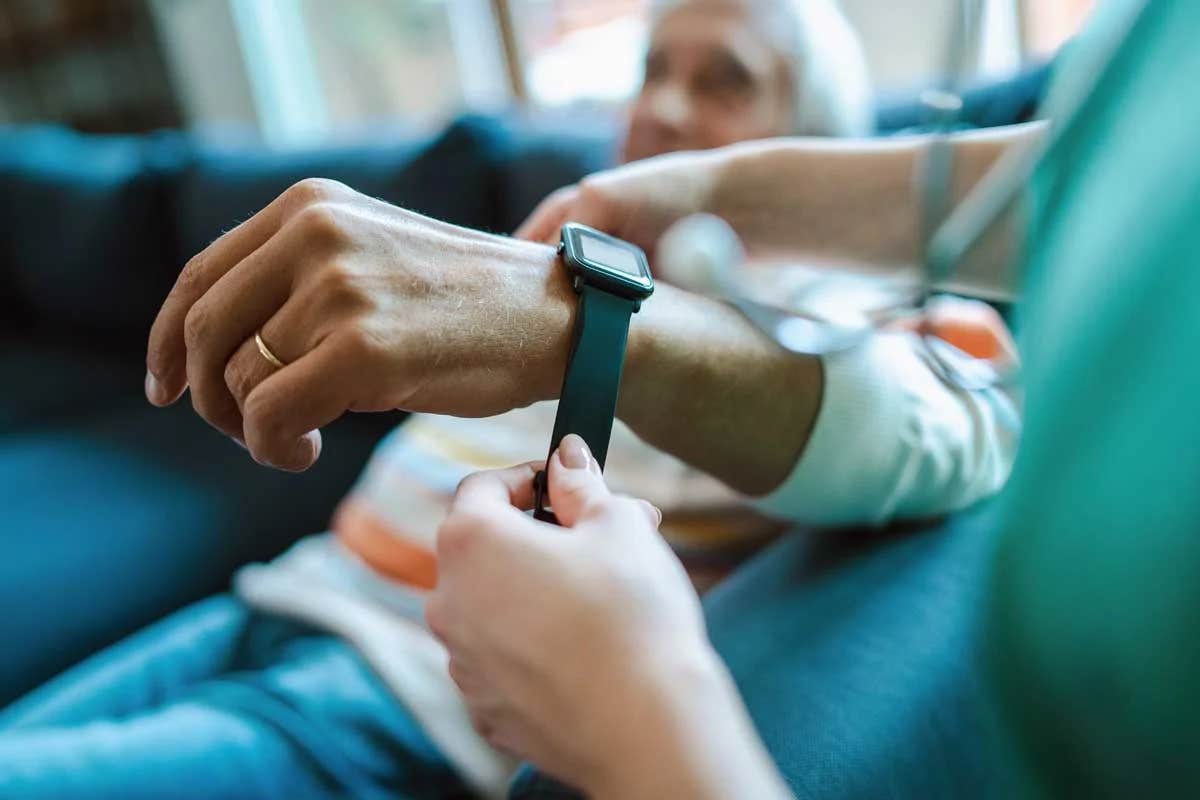Cutting-edge wearable improves support for people with dementia
Wearable technology can help caregivers reduce stress and track loved ones with dementia, improving safety and peace of mind.

Wearable devices help caregivers manage wandering in people with dementia, reducing stress and improving safety. (CREDIT: CC BY-SA 4.0)
Alzheimer’s disease and other forms of dementia are becoming more common in the United States. Millions of older adults are affected, and many experience confusion, disorientation, and agitation.
One of the biggest concerns for families is wandering—when a person with dementia unexpectedly leaves a familiar place and becomes lost. Since memory loss and communication difficulties are common symptoms, they may not be able to provide necessary information to reunite with loved ones.
Caring for a person with dementia is emotionally and physically demanding. Family caregivers already face higher stress levels and worse health outcomes compared to non-caregivers.
Worrying about wandering adds to this burden, increasing the need for constant supervision. As the number of people living with dementia grows, finding practical solutions to support caregivers and improve safety is critical.
Technology’s Role in Dementia Care
In recent years, caregiving technology has expanded, offering tools for diagnosis, monitoring, and safety. A national survey found differences in how caregivers and those receiving care use technology, highlighting gaps in adoption.
Despite a wide range of products designed to prevent wandering, little research exists on how caregivers use them and how beneficial they find them.
Wearable GPS devices and non-invasive sensors have been introduced to help caregivers track loved ones and ease their emotional strain. These technologies can provide real-time location updates and alerts when a person wanders, helping families respond quickly. However, more research is needed to assess their effectiveness in real-world caregiving situations.
Related Stories
A pilot study funded by the Texas Alzheimer’s Research and Care Consortium examined caregiver satisfaction with an innovative monitoring system called Theora Care.
Led by researchers from the Texas A&M University School of Public Health, the study focused on usability and how well caregivers felt the technology helped them manage wandering behavior.
Study Findings on Wearable Technology
The research team studied 41 caregiver-care recipient pairs at three sites in Texas between 2018 and 2021. The average caregiver was 66 years old, and most were female. Many were caring for a spouse or parent, providing an average of 5.7 hours of care daily. The care recipients were typically in their late 70s, and the majority were male.
Participants used the Theora Care system, which includes a smartwatch-like device worn by the person with dementia and a smartphone application for the caregiver.
The wearable device featured GPS tracking, emergency calling, and geofencing to set location boundaries. If the wearer left a designated safe zone, the system alerted the caregiver. The device also allowed two-way communication, helping caregivers check in when needed.
Caregivers used the system for three months and then completed a phone interview to discuss their experience. They shared feedback on how often they used features like location tracking, safe zones, and emergency calling. The study also measured satisfaction levels based on a standard caregiving stress scale.
How Caregivers Benefited
Results showed that 70% of caregivers ensured their loved ones wore the device daily. However, the smartphone features, such as location tracking and two-way calling, were used less frequently, with daily use ranging from 17% to 39%. Researchers believe this indicates that caregivers felt reassured simply by knowing their loved one was wearing the device, reducing their need to check location data constantly.
“Caregivers with higher initial stress levels found the system particularly useful,” said Dr. Matthew Lee Smith, a professor of health behavior at Texas A&M. “They were also more satisfied with it, likely because it eased the burden of constant supervision and reduced fears about wandering.”
These findings, published in Sage Journals, suggest that multi-function technologies can be adopted and benefit both caregivers and those living with dementia. While further research is needed, wearable monitoring devices offer promising support for families managing the challenges of dementia care.
Note: Materials provided above by The Brighter Side of News. Content may be edited for style and length.
Like these kind of feel good stories? Get The Brighter Side of News' newsletter.
Joshua Shavit
Science & Technology Writer | AI and Robotics Reporter
Joshua Shavit is a Los Angeles-based science and technology writer with a passion for exploring the breakthroughs shaping the future. As a contributor to The Brighter Side of News, he focuses on positive and transformative advancements in AI, technology, physics, engineering, robotics and space science. Joshua is currently working towards a Bachelor of Science in Business Administration at the University of California, Berkeley. He combines his academic background with a talent for storytelling, making complex scientific discoveries engaging and accessible. His work highlights the innovators behind the ideas, bringing readers closer to the people driving progress.



